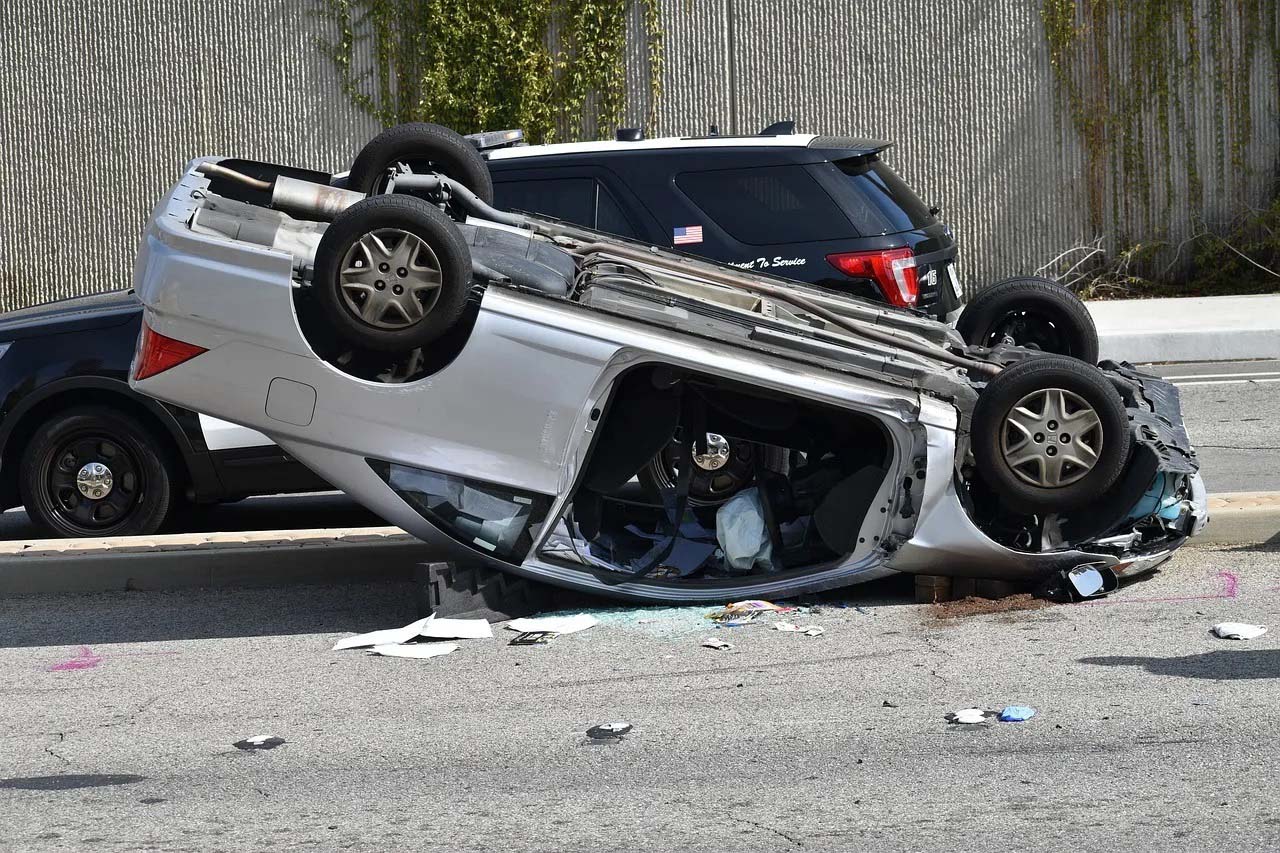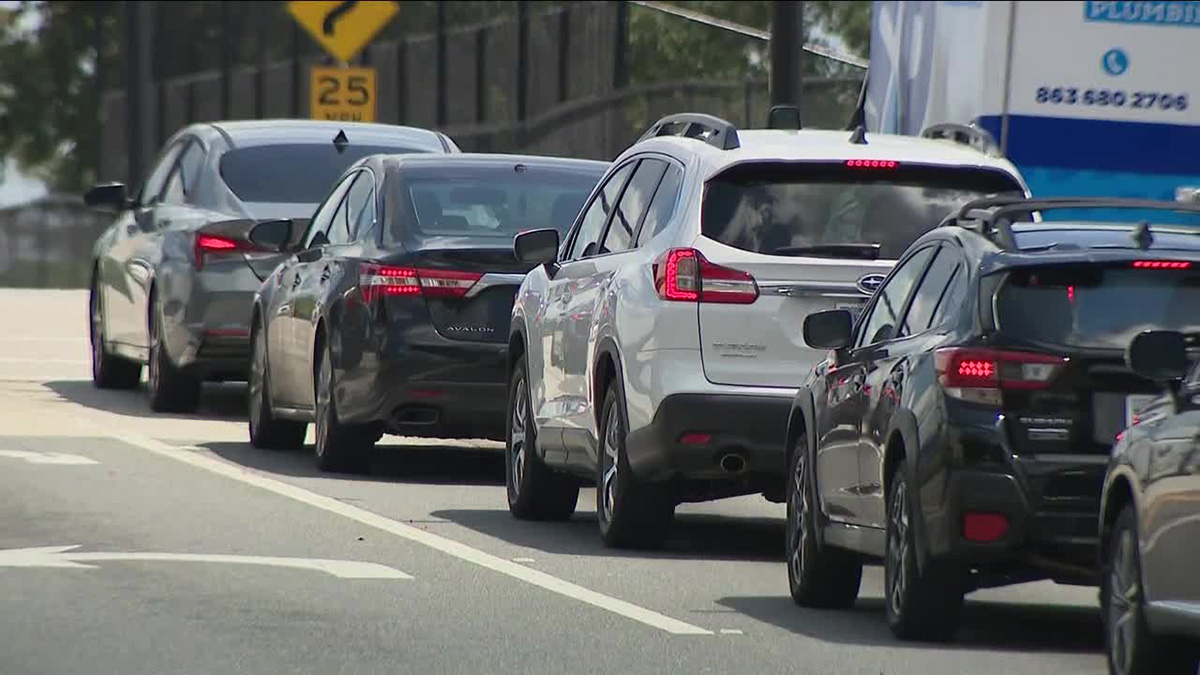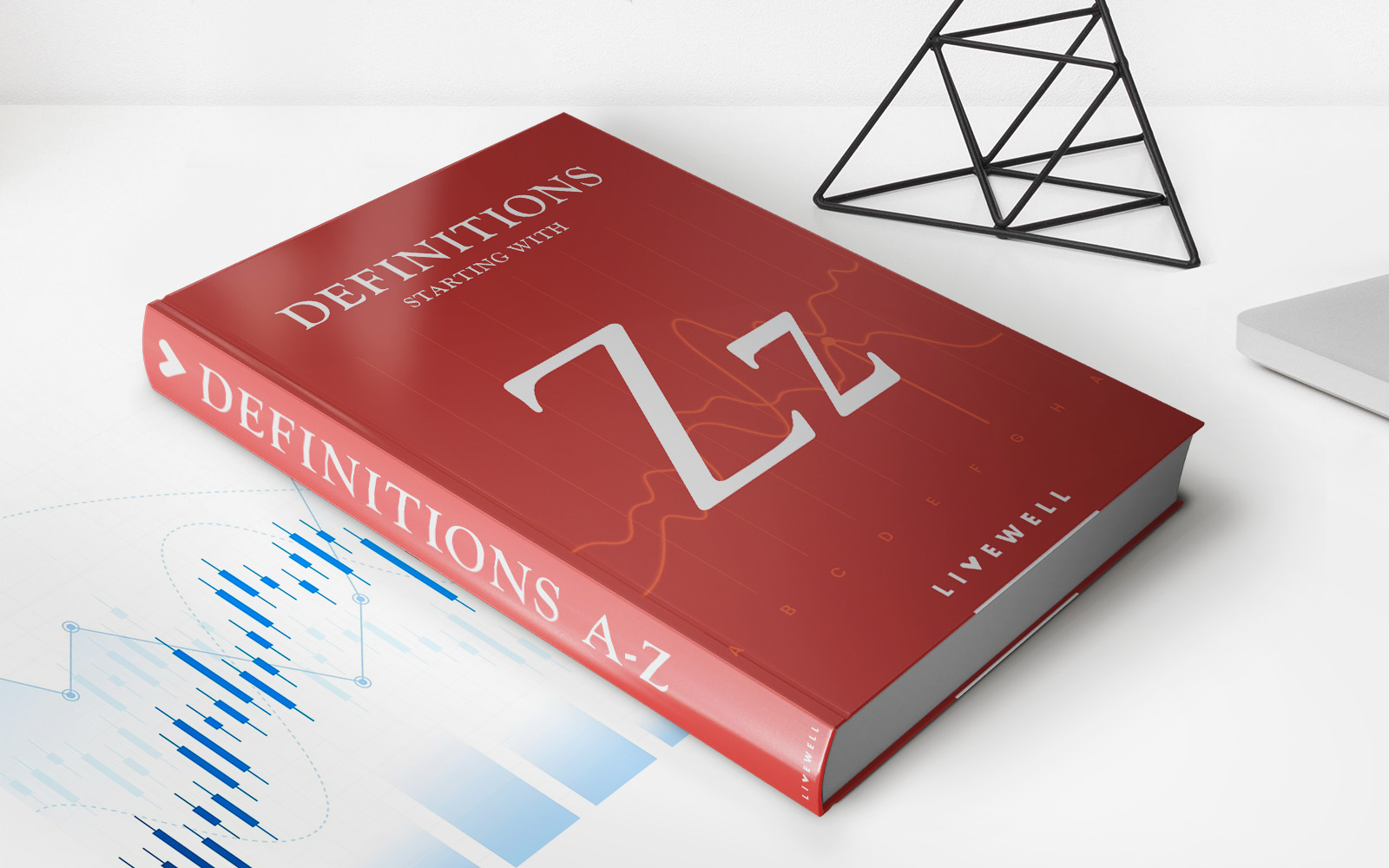

Finance
Why Is BMW Insurance So Expensive
Published: November 14, 2023
Looking for answers to why BMW insurance is costly? Discover the financial factors behind the high insurance premiums for BMW vehicles and find ways to mitigate the expenses.
(Many of the links in this article redirect to a specific reviewed product. Your purchase of these products through affiliate links helps to generate commission for LiveWell, at no extra cost. Learn more)
Table of Contents
Introduction
When it comes to luxury automobiles, BMW is a name that commands attention. With its sleek design, cutting-edge technology, and high-performance capabilities, it’s no wonder that BMW cars are coveted by many. However, owning a BMW comes with a price tag beyond the initial purchase. One aspect that can catch many BMW owners off guard is the cost of insurance.
BMW insurance tends to be more expensive compared to other vehicles, and there are several factors that contribute to this higher cost. Understanding why BMW insurance is pricier can help current and prospective BMW owners make informed decisions and potentially find ways to lower their insurance premiums.
In this article, we will delve into the reasons behind the high cost of BMW insurance. We will explore the luxury and high-performance features that make BMWs desirable but also increase the risk and cost of repairs. Additionally, we will discuss how the theft risk associated with BMWs, the safety ratings of these vehicles, the driving demographics of BMW owners, and even the location and parking habits of owners all play a role in insurance costs.
Moreover, we will shed light on the different insurance coverage options available for BMW owners. Understanding the type of coverage that best suits your needs and preferences can help you navigate the insurance market and potentially find ways to save on premiums.
Lastly, we will provide some valuable tips and strategies to potentially lower BMW insurance costs. These practical suggestions can range from making vehicle modifications and implementing anti-theft measures to improving driving records and taking advantage of available discounts.
By delving into the world of BMW insurance, you will gain a deeper understanding of the factors that contribute to the higher insurance costs associated with these luxury vehicles. Armed with this knowledge, you can make informed decisions and potentially find ways to mitigate the financial impact of BMW insurance, allowing you to enjoy the thrill and prestige of owning such a remarkable car.
Factors that Contribute to BMW Insurance Costs
There are several factors that contribute to the higher insurance costs associated with BMW vehicles. Understanding these factors can shed light on why BMW insurance tends to be more expensive compared to other cars.
One of the primary factors is the high-performance and luxury features that BMWs are renowned for. These features not only make BMWs desirable but also increase the risk and cost of repairs. High-performance engines, advanced technology, and advanced safety features can make repairs more complex and costly, which insurers take into account when determining premiums.
The parts and repairs of BMW vehicles also contribute to the insurance costs. BMWs are built with precision and utilize specialized parts, which can be more expensive to replace or repair. In the event of an accident or even minor damage, the cost of replacing these parts can significantly impact the insurance claim and subsequently increase premiums.
Theft risk is another crucial factor in insurance costs. BMWs are often targeted by thieves due to their high value and desirability. The risk of theft can vary depending on the model and the area where the car is primarily driven and parked. Insurers factor in the theft risk associated with BMWs when determining premiums.
The safety ratings of BMW vehicles also play a role in insurance costs. While BMWs are equipped with advanced safety features, such as adaptive cruise control, lane departure warning, and emergency braking systems, they also have high-performance capabilities that may increase the likelihood of accidents. Insurers consider the overall safety ratings and crash test results of BMWs when setting premiums.
Additionally, the demographics of BMW owners can impact insurance costs. BMWs are often associated with higher-income individuals who may have higher insurance coverage limits and more expensive policies. This demographic factor can influence premiums as insurers may assume a higher level of risk associated with these owners.
The location and parking habits of BMW owners can also affect insurance costs. Areas with higher rates of accidents or theft may result in higher premiums. Additionally, if the BMW is parked on the street or in an area with a higher risk of vandalism or theft, insurers may adjust premiums accordingly.
It’s important to note that insurance coverage options also play a significant role in BMW insurance costs. Comprehensive coverage, which includes protection against theft, vandalism, and weather-related damage, will generally result in higher premiums compared to basic liability coverage.
Overall, the combination of high-performance features, expensive parts, theft risk, safety ratings, owner demographics, location, and coverage options all contribute to the higher insurance costs associated with BMW vehicles. Understanding these factors can help BMW owners make informed decisions and potentially find ways to mitigate the impact on their insurance premiums.
High-performance and Luxury Features
One of the standout characteristics of BMW vehicles is their high-performance and luxury features. These features not only make BMWs desirable but also contribute to the higher insurance costs associated with these vehicles.
BMW cars are known for their powerful engines and impressive performance capabilities. From the nimble handling to the exhilarating acceleration, BMWs are designed to deliver an exceptional driving experience. However, this high-performance nature can also increase the risk of accidents, which in turn affects insurance premiums. Insurers take into account the increased risk associated with high-performance cars when calculating rates.
Furthermore, the luxury features found in BMW vehicles add to their appeal but can also impact insurance costs. BMWs are equipped with advanced technology and amenities, such as touchscreens, premium sound systems, and comfortable leather seats. These luxurious features not only contribute to the overall value of the vehicle but also increase the cost of repairs in the event of damage. Insurers consider the higher costs associated with repairing or replacing these luxury features when determining premiums.
Additionally, the advanced safety features present in BMWs can influence insurance costs. BMWs are equipped with cutting-edge technology designed to enhance safety on the road. These features may include adaptive cruise control, lane departure warning, blind-spot detection, and emergency braking systems. While these safety features can potentially reduce the risk of accidents, they also add complexity to repairs if they become damaged. Insurers factor in the cost of repairing or replacing these advanced safety features when calculating premiums.
The high-performance and luxury features of BMWs undoubtedly contribute to the overall desirability and prestige of these vehicles. However, it is important to be aware that these features also impact insurance costs. BMW owners must consider these factors when budgeting for insurance premiums and understanding the reasons behind the higher costs associated with insuring their luxury vehicles.
Parts and Repairs
When it comes to insurance costs for BMW vehicles, the cost of parts and repairs is a significant factor to consider. BMWs are known for their precision engineering and high-quality components, but these factors can contribute to higher insurance premiums.
BMW vehicles are built with specialized parts that are often more expensive to replace or repair compared to those of non-luxury vehicles. These unique parts, such as specialized engines, sophisticated suspension systems, and advanced electrical systems, can come at a premium price. In the event of an accident or even minor damage, the cost of replacing these parts adds up, potentially increasing the overall claim amount paid by insurance companies.
Another aspect to consider is the availability of parts. BMW cars often require specific parts that are not readily available or widely stocked at regular auto repair shops. This can lengthen the repair process and increase the cost. Insurance companies take into account these factors when determining premiums, as the more expensive and hard-to-find parts will impact the overall claims and repair costs associated with BMW vehicles.
Additionally, the complexity of repairs for BMWs can also affect insurance costs. Due to their sophisticated and advanced technology, repairing BMW vehicles often requires specialized knowledge, tools, and equipment. Repair shops with the expertise and resources to handle these repairs may charge higher labor rates, further driving up the cost of repairs. This complexity is factored into insurance premiums, as insurers recognize the higher costs associated with repairing BMW vehicles.
It is crucial for BMW owners to consider the potential costs of parts and repairs when evaluating insurance options. Understanding that these luxury vehicles require specialized parts and more involved repairs can help owners make informed choices when selecting coverage and budgeting for insurance costs.
Theft Risk
When it comes to insuring BMW vehicles, one key consideration for insurance companies is the risk of theft. BMWs are often targeted by thieves due to their desirability, high value, and advanced security systems.
As luxury vehicles, BMWs tend to have a higher resale value than non-luxury cars. This makes them attractive targets for thieves looking to profit from the sale of stolen vehicles or their valuable parts. The risk of theft can vary depending on the specific model of the BMW as well as the area where the car is primarily driven and parked.
BMWs are equipped with advanced security features, such as immobilizer systems, alarm systems, GPS tracking, and keyless entry systems. These security measures are designed to deter theft and increase the chance of recovery in case of theft. However, even with these security features, determined thieves may still attempt to steal a BMW.
Insurance companies take into account the theft risk associated with BMW vehicles when determining premiums. Areas with higher rates of car theft or a history of BMW thefts may result in higher insurance costs. Similarly, if a BMW is parked in an area with inadequate security, insurers may increase premiums to account for the elevated risk.
It is worth noting that owners can take steps to reduce the risk of theft and potentially lower insurance costs. Parking in well-lit areas, using additional security devices like steering wheel locks or tracking systems, and installing a car alarm are all measures that can deter thieves and provide added protection for the vehicle. By investing in these security measures, BMW owners can potentially qualify for insurance discounts and lower their premiums.
Understanding the potential theft risk associated with BMW vehicles is essential for owners to make informed decisions about insurance coverage. By being aware of the elevated theft risk and taking proactive steps to protect their vehicles, BMW owners can potentially mitigate the financial impact of insurance premiums.
Safety Ratings
When it comes to insurance costs for BMW vehicles, safety ratings play an integral role in determining premiums. BMW prides itself on producing vehicles that prioritize both performance and safety. However, the high-performance capabilities of BMW cars may impact their safety ratings, which in turn can affect insurance costs.
BMW vehicles undergo rigorous testing and evaluation by various safety organizations, such as the National Highway Traffic Safety Administration (NHTSA) and the Insurance Institute for Highway Safety (IIHS). These organizations conduct crash tests and assess the safety features and performance of vehicles. The results of these tests contribute to the safety ratings assigned to BMW models.
While BMWs often excel in areas such as structural integrity and advanced safety features, their high-performance nature can influence safety ratings. The powerful engines and agile handling characteristics of BMW cars may increase the likelihood of accidents, especially if the driver is inexperienced or fails to exercise caution. Insurers take into account these performance-related factors when assessing the safety ratings of BMW vehicles.
Insurance companies consider the safety ratings of vehicles when determining premiums. Cars with high safety ratings typically qualify for lower insurance rates because they are deemed less likely to be involved in accidents or cause significant damage in the event of a collision.
It is important to note that despite the performance-oriented characteristics of BMW cars, they are equipped with extensive safety features and technologies to enhance driver and passenger safety. These features may include adaptive cruise control, lane departure warning, blind-spot detection, and emergency braking systems. Such advanced safety features can help mitigate the risk of accidents and reduce the severity of collisions.
BMW owners should be aware of the safety ratings of their specific vehicle model and factor these ratings into their insurance considerations. While the high-performance capabilities of BMWs may have an impact on safety ratings and insurance costs, their advanced safety features contribute to overall driver and passenger protection.
Driving Demographics
Driving demographics play a significant role in insurance costs for BMW vehicles. The demographics of BMW owners can vary in terms of age, driving experience, and other factors that insurers consider when determining premiums.
BMW cars are often associated with higher-income individuals who can afford the luxury and prestige that comes with owning such a vehicle. These owners typically have higher insurance coverage limits and may opt for more comprehensive insurance policies. As a result, insurers may consider BMW owners as a higher risk group due to the potentially higher value of claims that may arise in the event of an accident.
Age is another factor that insurers take into account. Younger drivers, especially those in their late teens and early twenties, are statistically considered more likely to be involved in accidents due to their relative lack of driving experience. Insurance premiums tend to be higher for younger BMW owners based on this demographic trend.
Additionally, the driving record of BMW owners affects insurance costs. Insurers consider factors such as the number of previous accidents, tickets, and other violations when determining premiums. Drivers with a history of accidents or traffic violations are viewed as a higher risk and consequently face higher insurance costs compared to those with clean driving records.
It is worth mentioning that individual insurance companies may also consider other specific demographics such as marital status, occupation, and geographical location when determining premiums for BMW owners. Urban areas with higher traffic density and accident rates may result in higher premiums, while living in a suburban or rural area may bring down insurance costs.
Understanding the demographic factors that influence insurance costs is essential for BMW owners. By being aware of how age, driving record, and other factors impact premiums, BMW owners can make informed decisions and potentially take steps to lower their insurance costs, such as improving their driving record or taking defensive driving courses.
Location and Parking
The location where a BMW is primarily driven and parked can have an impact on insurance costs. Both the geographic location and the parking situation can influence the risk of accidents, theft, and vandalism, which insurance companies take into consideration when determining premiums.
Urban areas with high population density typically have more traffic congestion, increasing the likelihood of accidents. Additionally, these areas may have higher crime rates, which can elevate the risk of theft or vandalism. As a result, BMW owners living in urban areas may face higher insurance premiums.
On the other hand, living in a suburban or rural area tends to have lower rates of accidents and criminal activity, which can lead to more favorable insurance rates. The reduced risk of accidents and theft in these areas can result in lower premiums for BMW owners.
Parking habits also influence insurance costs. If a BMW is parked on the street instead of a secure garage or parking lot, insurers may view it as more vulnerable to theft or vandalism. Similarly, if a BMW is parked in an area with a higher risk of accidents or incidents, such as a narrow street or a crowded parking lot, insurance companies may factor in this increased risk when determining premiums.
Some insurance companies offer discounts to BMW owners who have access to secure parking facilities, such as private garages or gated parking lots. Parked vehicles are less likely to be involved in accidents or targeted by thieves, so having a secure parking arrangement can potentially lead to lower insurance costs.
When considering insurance options, BMW owners should take into account their location and parking situation. Factors such as the crime rate, traffic density, and available parking options should be considered when evaluating insurance coverage. By being aware of these factors and potentially taking steps to improve parking security, BMW owners may be able to reduce their insurance costs.
Insurance Coverage Options
When it comes to insuring a BMW, owners have a range of insurance coverage options to choose from. Understanding these options is crucial for BMW owners to find the right balance between coverage and affordability.
The most basic type of insurance coverage is liability insurance, which is typically required by law. This coverage helps cover the costs of property damage or medical expenses for others in an accident that the BMW owner is found to be at fault for.
Comprehensive coverage is another option that BMW owners should consider. This coverage protects against a wide range of risks, including theft, vandalism, natural disasters, and damage from accidents that are not collision-related (like hitting an animal or falling objects). Comprehensive coverage provides more extensive protection but comes with a higher premium price.
Collision coverage is designed to cover the costs of repairing or replacing a BMW if it is involved in a collision, regardless of fault. This coverage is particularly relevant for BMW owners, as repairs can be costly due to the specialized parts and advanced technology found in these vehicles.
Some insurance companies also offer additional coverage options tailored specifically for luxury vehicles like BMWs. These options may include gap insurance, which covers the difference between the amount remaining on a car loan and the actual cash value of the BMW in case it is totaled. Another option is agreed value insurance, where the insurance policy is based on a mutually agreed-upon value for the BMW, taking into consideration its unique specifications and features.
When selecting an insurance coverage option, BMW owners should consider their budget, the value of the vehicle, and their individual needs. It’s important to strike a balance between adequate coverage and affordability. Evaluating the risks, taking into account factors such as driving habits and location, and discussing the available options with insurance providers can help BMW owners find the right insurance coverage to protect their investment.
Tips to Potentially Lower BMW Insurance Costs
While BMW insurance costs tend to be higher compared to other vehicles, there are several strategies that BMW owners can implement to potentially lower their insurance premiums without compromising coverage. Consider the following tips:
- Shop around: Don’t settle for the first insurance quote you receive. Take the time to compare rates from multiple insurance providers to ensure you’re getting the best possible price for your coverage.
- Consider higher deductibles: Increasing your deductible, the amount you pay out of pocket before insurance kicks in, can lower your insurance premiums. However, be sure to choose a deductible amount that you can comfortably afford to pay if you need to make a claim.
- Bundle your policies: Inquire about bundling your BMW insurance with other insurance policies you have, such as homeowner’s or renter’s insurance. Many insurance companies offer discounts for bundling multiple policies.
- Take advantage of discounts: Ask your insurance provider about any available discounts you may qualify for, such as safe driver discounts, multi-vehicle discounts, or discounts for completing defensive driving courses.
- Install anti-theft devices: Adding security features to your BMW, such as GPS tracking systems, alarm systems, or steering wheel locks, can help deter theft and lower your insurance premiums.
- Maintain a clean driving record: Avoid traffic violations and accidents as much as possible, as a clean driving record can significantly impact your insurance premiums. Safe driving habits demonstrate to insurers that you’re a responsible driver.
- Consider usage-based insurance: Some insurance companies offer usage-based insurance programs where your premium is based on your actual driving habits. Driving fewer miles or avoiding high-risk driving times can potentially lower your premiums.
- Improve vehicle security: If you have the option, park your BMW in a secure garage or parking facility to reduce the risk of theft or vandalism. Insurance companies may offer discounts for vehicles kept in safe and monitored parking areas.
- Review your coverage annually: As your BMW ages, the value may decrease, and certain coverages may become less necessary. Regularly review your insurance coverage and adjust it accordingly to potentially save on premiums.
Remember, each insurance provider may assess these factors differently, so it’s important to discuss applicable discounts and strategies with your insurance agent or company. By taking proactive steps to lower your BMW insurance costs, you can enjoy the benefits of owning a luxury vehicle while minimizing financial strain.
Conclusion
Insuring a BMW comes with its own set of unique considerations and costs. The higher insurance premiums associated with BMW vehicles are influenced by various factors, including the high-performance and luxury features, the cost of parts and repairs, the theft risk, safety ratings, driving demographics, and even location and parking habits. Understanding these factors is crucial for BMW owners to make informed decisions and potentially find ways to manage the insurance costs.
While the cost of BMW insurance may be higher compared to other vehicles, there are strategies that BMW owners can employ to potentially lower their premiums. By shopping around for quotes, considering higher deductibles, bundling insurance policies, taking advantage of discounts, installing anti-theft devices, maintaining a clean driving record, and improving vehicle security, BMW owners can potentially reduce their insurance costs. Additionally, considering the right insurance coverage options, such as comprehensive and collision coverage, ensures adequate protection while striking a balance between coverage and affordability.
It’s important for BMW owners to regularly review their insurance coverage and compare quotes from multiple providers to ensure they are getting the best rates. By staying proactive and taking advantage of available discounts and security measures, BMW owners can potentially lower the financial burden of insurance while still enjoying the luxury and performance that comes with their remarkable vehicles.
In conclusion, understanding the factors that contribute to BMW insurance costs and implementing cost-saving measures can help BMW owners navigate the insurance market and find ways to manage their premiums effectively.














